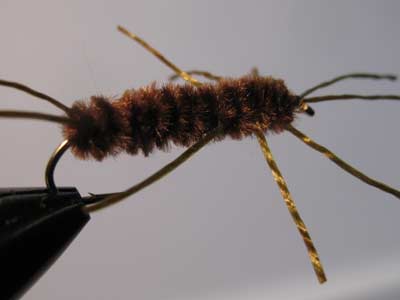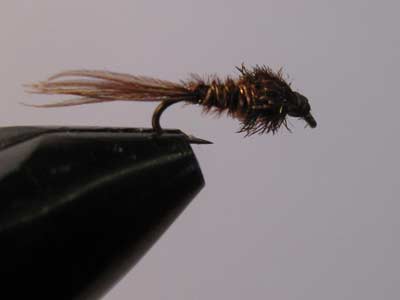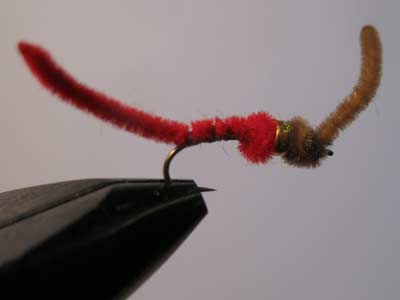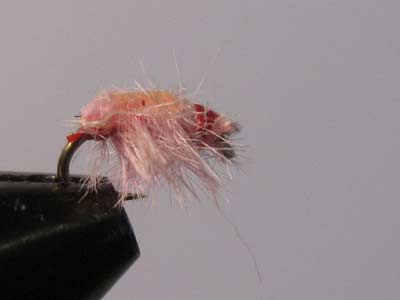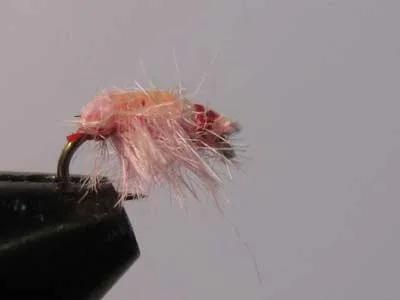
Winter fly fishing in Montana isn’t rocket science. The fish have left the shallow riffles and heavy pocket water in favor of the slower and deeper pools. Once you find a good wintertime run there will probably be dozens if not hundreds of trout in it. The trout are going to do 95% of their feeding between noon and 4pm and with some exceptions you will likely be nymph fishing. Trout are also receiving very little pressure during the winter months and are not very picky on fly selection so an elaborate fly box is not essential. The following list of flies are all you need to catch fish on every stream and river in Montana during the winter months including big freestone rivers, tail waters and spring creeks. There are certainly other patterns that will also catch fish, but you don’t need to get too complicated and don’t waste time changing out lots of flies. If you aren’t hooking up in the winter it probably is because you haven’t found good holding water or you aren’t getting down to the fish. Make sure you have enough weight to put flies directly on the bottom and use an indicator that detects subtle strikes such as poly yarn.
Girdle Bug Stoneflies are important on every boulder strewn freestone river in Montana and trout are looking for stonefly nymphs even in the colder months. Although there is a plethora of different stonefly nymph patterns there is really no reason to get more complicated than a girdle bug (aka rubber legs). A black or brown size 6 or 8 girdle bug trailed with something smaller is a good bet for freestoners.
Pheasant Tail Pheasant tails catch fish year round and on every trout river in the world. It should be no surprise that it is also a great winter pattern. Try a smaller size in the colder months like an 18 or 20. Any variation of the pheasant tail will work. They are best fished behind a girdle bug or san juan worm.
San Juan Worm It might not be glamorous but sometimes you just want to catch a trout in the middle of February and san juan worms are often the magic ticket. Fished in different sizes from 10 to 6 and in colors including red, pink, wine and orange they are almost always productive in the winter. Wire worms are a nice option for deeper runs where getting to the bottom isn’t a trivial process.
Eggs Browns spawn in late fall and rainbows spawn in the early spring so it should be no wonder that egg patterns are effective all winter (especially late winter). Smaller eggs are often more productive than large patterns and roe orange, chartreuse, and cream are the most productive.
Pink Ray Charles I don’t think there are a whole lot of pink sow bugs out there but this bug definitely hooks up, even on rivers without sow bugs. There is something about the color pink in the winter that just produces: pink worms, eggs, and attractor nymphs are all effective. My guess is they eat the pink Ray as an egg. I like them with beads for freestone rivers and beadless for spring creeks.
Pink soft hackle lightning bug Notice the pink theme. There is a reason that the bins with pink lightning bugs and pink soft hackles are always empty at the shops from February to April. Trust me, just try it.
Zebra midge Not much hatches in the winter (except some midges) and there are often more midges than just about anything else in a whole lot of fisheries (especially spring creeks and tail waters). A small zebra is almost always my point fly on spring creeks and tail waters and also a good option on freestone rivers in the winter. Go small – 22 and 20.
Palomino midge dry Although dry fly fishing dries up in the winter months, some tail waters and spring creeks produce predictable dry fly fishing over late winter midge hatches. A small palomino dry is all that you need.
Griffiths Gnat The Griffith’s gnat imitates a cluster of midges and on some tail waters like the Bighorn winter midge hatches can get pretty thick. When midges are clustering they become a target for trout that enjoy the benefit of taking in multiple insects in one gulp.
Sculpin Don’t be afraid to fish some meat in the winter months, especially on freestone rivers where sculpins are common. The best way to fish these in the winter is just to dead drift them with maybe a few twitch mends mixed in. Fish your favorite rabbit fur sculpin pattern with a smaller worm, pheasant tail or egg pattern behind it and swing for the fences. Although the catch rates usually go down you just might fool that monster trout that hasn’t seen flies in months.

